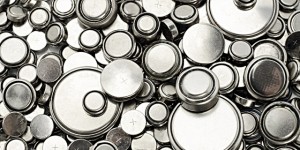
This is a warning for ALL parents – especially those with younger children. Thank you to our partners at Levine Children’s Hospital for sharing such important information with us. It was originally posted on their blog.
For toddlers who explore the world around them using their mouths, lithium ‘button’ batteries are easily accessible items that can sometimes lead to irreversible harm, or death.
These small, disc-shaped batteries power everything from watches, flameless candles and hearing aids to toys, remotes and musical greeting cards. They’re also referred to as ‘coin cell’ batteries – resembling coins in their size, color, weight and shape. Once a bite-sized battery gets swallowed, saliva triggers a chemical reaction that can cause permanent damage and severely burn the food tube, esophagus or throat in as little as two hours.
The potential dangers of lithium ‘batteries have gained increased media attention following the recent death of an Oklahoma toddler who swallowed one. Parents and caregivers can help prevent these accidents by spreading awareness about common symptoms, sharing prevention tips and child-proofing areas where kids play.
A child in America swallows a ‘button’ battery about every three hours and the number of serious injuries or deaths linked to children swallowing the batteries has increased nine-fold in the last decade, according to safekids.org. Throughout the U.S., roughly 3,000 kids visit an emergency room each year to get treated for ingesting a button battery; more than 80 kids have experienced permanent damage from injuries caused by swallowing button batteries; and, out of the 15 children that have died, 11 have died within the last six years.
Amy Puchalski, MD, an attending physician in the Children’s Emergency Department at Carolinas Medical Center, says many parents aren’t aware of the problem.
“The scary part is that it may not be obvious there is something wrong at first,” says Puchalski. “Kids might still breathe and act normally after ingesting a battery. The child may just appear fussy initially, so the acid can do a good bit of damage before the problem is found. If a parent has any concern their child may have swallowed a button battery, they should contact their child’s doctor.”
Repairing the damage may involve multiple surgeries, says Puchalski. Even after a battery is removed, kids can experience terrible side effects to their vocal chords, windpipe and esophagus.
“We want to remind parents to keep button batteries out of reach at all times,” she says. “As an added safety measure, caregivers can use duct tape to child-proof items that use the batteries.”
Know the Warning Signs
– Chest and/or abdominal discomfort
– Blood in saliva and/or stool
– Speaking with a hoarse voice
– Having trouble swallowing
– Eating or drinking less
– Sudden crying
– Drooling
– Vomiting
Battery Safety 101
If you suspect your child has swallowed a battery:
– Go directly to the emergency room, or call the National Battery Ingestion Hotline at (202) 625-3333.
– Do not give medications that promote bowel movements or induce vomiting.
– Do not give your child anything to eat or drink.
– Do not attempt the Heimlich maneuver; it increases the risk of injury.
By the Numbers
2,836: The number of kids who swallowed button batteries in the U.S. in 2012.
84: The percentage of all battery-related emergency room visits linked to button batteries.
80: The number of kids nationwide who have experienced permanent damage.
61: The number of people who reported exposure to button batteries to the Carolinas Poison Center last year.
11: The number of children that have died within the last six years.
3.9: The average age of someone who has swallowed a button battery.
2: How many hours it takes to cause severe, sometimes irreversible damage.
![]()
Levine Children’s Hospital
Facebook
Instagram
Twitter
Pinterest



